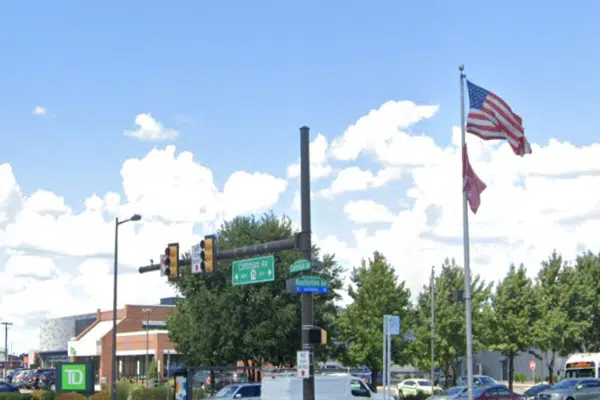
Northeast Philadelphia remains in turmoil after a tragic medical transport plane crash claimed the lives of seven people and left a staggering 22 others injured. The catastrophic event, which occurred Friday evening, has left a community grappling with loss, displacement, and uncertainty. Smoke and flames consumed the area along Cottman Avenue near Bustleton Avenue, leaving a 4–6 block radius scarred by debris, damaged homes, and charred vehicles.
The crash involved a Learjet 55 carrying six individuals, including a pediatric patient traveling with her mother, according to Fox 29. All six passengers, identified as Mexican citizens, perished in the accident. Jet Rescue Air Ambulance confirmed the victims as Capt. Alan Alejandro Montoya Perales, co-pilot Josue de Jesus Juarez Juarez, Dr. Raul Meza Arredondo, paramedic Rodrigo Lopez Padilla, patient Valentina Guzman Murillo, and her mother, Lizeth Murillo Ozuna. A seventh victim, an individual inside a vehicle near the crash site, was confirmed Sunday by Mayor Cherelle Parker. The name of this victim has not yet been released.
Among the 22 injured, five remain hospitalized, with three in critical condition. The crash has left deep physical and emotional scars on the community. Local residents describe scenes of chaos and heartbreak.
"Smoke was everywhere," recalled Alexis Lloyd, who fled her burning home. "I just remember screaming and running out." Her mother, Vanessa Temple, spoke of the moment she recognized their destroyed home on the news. "We just started hugging and crying," she said.
The crash site tells a grim story, with debris embedded in streets and sidewalks, holes left where parts of the aircraft struck, and homes and businesses rendered uninhabitable.
The National Transportation Safety Board (NTSB) is working diligently to uncover the cause of the accident, which has been classified as such. Investigators have already recovered critical components, including the cockpit voice recorder (CVR) and the airplane’s enhanced ground proximity warning system (EGPWS). Both were embedded in the black box and found at the site of initial impact, buried 8 feet below the surface.
The CVR, along with the EGPWS, has been sent to the NTSB Vehicle Recorders Laboratory in Washington, DC for analysis. Officials revealed preliminary findings that the plane climbed to 1,500 feet, made a series of turns, and then entered a steep descent, resulting in a high-impact crash. Notably, the pilot did not reach out to air traffic control, though controllers attempted to contact the aircraft without success.
The aftermath has left families displaced and businesses shuttered, adding layers of hardship to an already devastated community. Charred vehicles line the roads, awaiting removal, while officials continue to gather debris.
The investigation remains ongoing as the NTSB works to determine what led to the crash. Meanwhile, residents like Alexis Lloyd and Vanessa Temple face the daunting task of rebuilding their lives.
Officials urge patience as they continue their work, but for those who witnessed the horror firsthand, the emotional toll is immeasurable. "It’s hard to see what’s left behind," said one local resident. "We’re just trying to figure out how to move forward."

When tragedy strikes, those affected are often left searching for answers and support. Following the devastating plane crash in Northeast Philadelphia, many victims and their families are grappling with the aftermath. Pennsylvania accident attorney Guy D’Andrea offers a clear understanding of the legal options available to those impacted, addressing questions about accountability, compensation, and the steps needed to protect their rights.
Editor Darla Medina: Mr. D’Andrea, with so many lives impacted by this disaster, what legal options are available to the victims and their families following such a tragic accident?
Attorney Guy D’Andrea: In cases like this, victims and their families may have the right to seek compensation through wrongful death or personal injury claims. These claims can be brought against parties whose negligence might have contributed to the crash, such as the aircraft operator, maintenance providers, or even manufacturers, depending on what the investigation reveals.
Medina: What factors typically determine liability in aviation accidents?
D’Andrea: Liability often hinges on the findings of the investigation. If mechanical failure played a role, the manufacturer could be held accountable. If the crash resulted from an operational error, the company operating the flight could face legal action. It’s also possible for multiple parties to share responsibility, which is why thorough investigations are so important.
Medina: For those who lost loved ones or suffered injuries, what steps should they take to protect their legal rights?
D’Andrea: The first step is consulting an experienced attorney. They can help families understand their rights, gather evidence, and navigate complex legal processes. It's also important to act quickly, as there are time limits—statutes of limitations—that determine how long someone has to file a claim.
Medina: How does compensation typically help victims in these situations?
D’Andrea: Compensation can cover medical expenses, loss of income, funeral costs, and emotional distress. While no amount of money can replace what’s been lost, it can help families rebuild and move forward after such a devastating event.
If you or a loved one has been affected by this tragic accident, you don’t have to navigate the aftermath alone. Understanding your rights and exploring your legal options can make all the difference in securing the support and compensation you deserve. Contact us today for a free consultation—our team is here to guide you through every step of the process with care and commitment.
 info@legalherald.com
info@legalherald.com